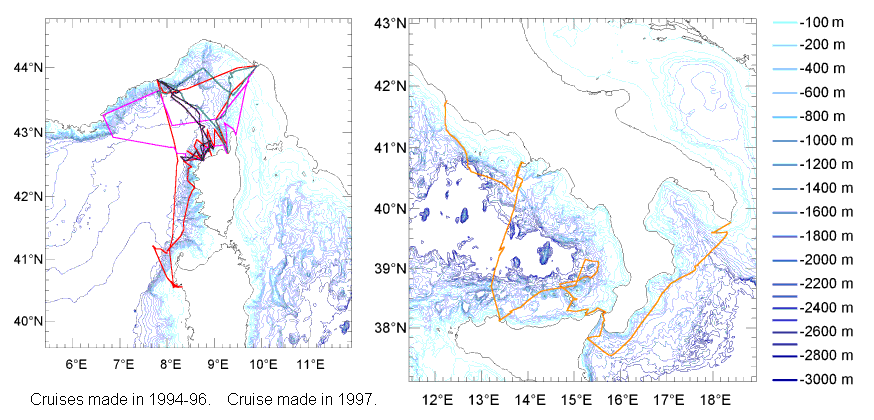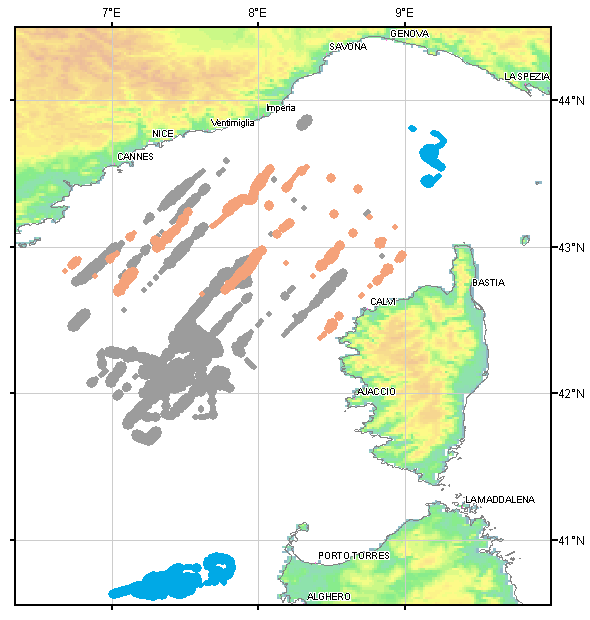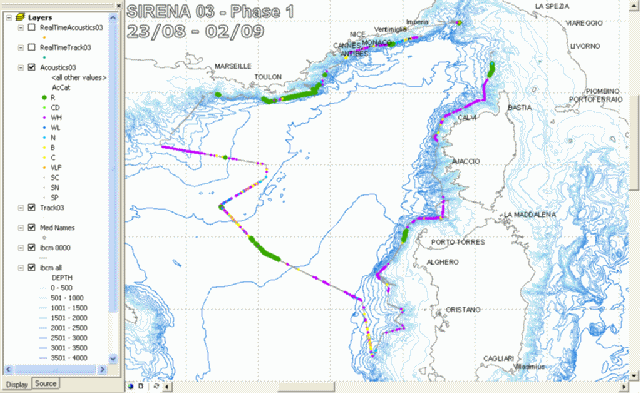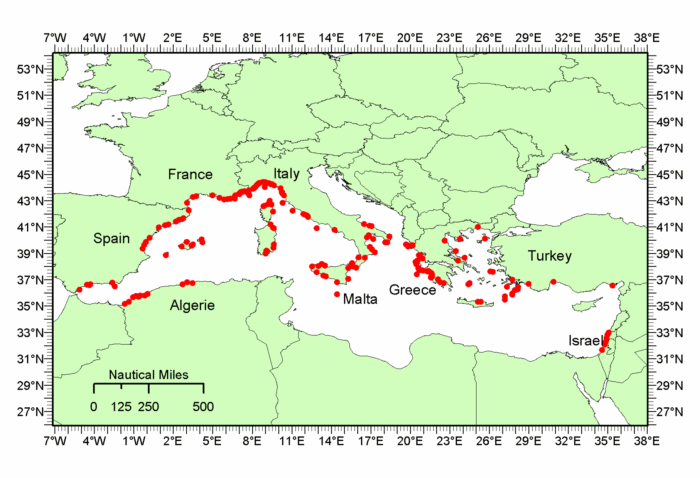
Università degli Studi di Pavia
Centro Interdisciplinare di Bioacustica e Ricerche Ambientali
Via Taramelli 24 - 27100 Pavia - Italye-mail : cibra@unipv.it
Geographic Information Systems
A Geographic Information System, or GIS, is a powerful tool for processing, interpreting, and analyzing spatial data. A GIS is a special information system designed to manage, process and plot data referenced by geographic coordinates. In other words, a GIS joins the capabilities of a database and of a mapping software. Some GIS also allows to process temporal data to show how things change with time.
Applications for the study of marine mammals
A GIS can be used for plotting the position of marine mammals (known by means of tags or of visual and acoustic survey data) on a map along with environmental data such as bathymetry, currents, surface temperature, distribution of nutrients, etc. By overlaying different kinds of data and by plotting processed data, it is possible to identify correlations among, for example, the water temperature or the currents and the presence or the navigation routes of animals. A long term collection of both zoological and environmental parameters allows to map the density of animals, to identify the preferred habitats and to eventually identify critical habitats requiring conservation.
The development of an oceanographic GIS at CIBRA began in 1994 based on the need of plotting the tracks of the research cruises and the positions of the animals detected visually or by passive acoustic listening. The first software we used was OceanMap, a mapping software able to merge different kinds of vector and raster data. As OceanMap is a mapping software rather than a true GIS, in 1999 we decided to adopt a widely used GIS such as ArcView and to experiment with other cheaper systems such as Manifold. Currently, we use ArcView 8 for almost all GIS operations, but we also like to use OziExplorer, a powerful shareware navigation program, for quick mapping needs while in navigation.
To set up the Oceanographic GIS for the Mediterranean Sea we adopted the IBCM bathymetric contours (vector data) included in the GEBCO 97 bathymetric atlas produced by the British Oceanographic Data Center. The contours were transformed into a suitable format by means of custom developed software. This part of the project was partially supported by the Institute of Architecture of Venice (IUAV).
The GIS is an important tool for accurately planning research cruises, as well as a tool for plotting and interpreting results. The figures below show the tracks of research cruises organized by CIBRA in years 1994 to 1997.
Within the SOLMAR Project ArcView extensions have been developed by both CIBRA and NURC to allow real-time data merging and plotting during visual and acoustic surveys for studying marine mammals; acoustic contacts logged by the CIBRA workstation can be sent to ArcView for real-time visualization, whilst the NURC system is able to collect and display visual contacts information generated by the visual team observing marine mammals as well as acoustic contacts generated by CIBRA.



